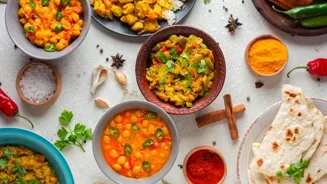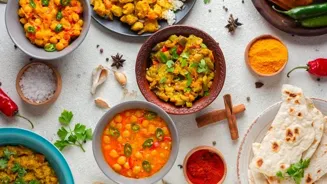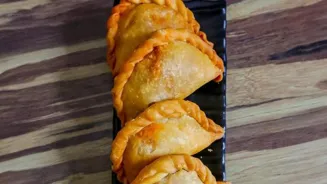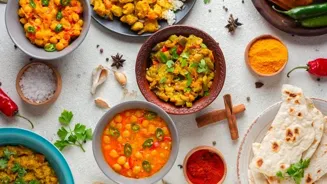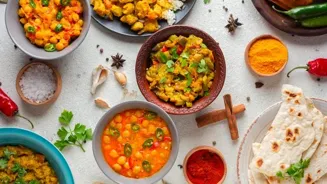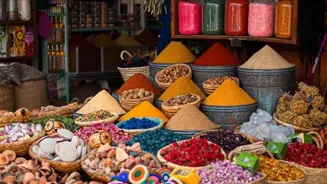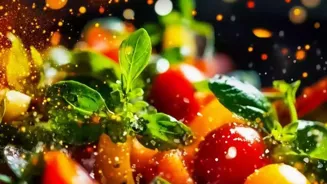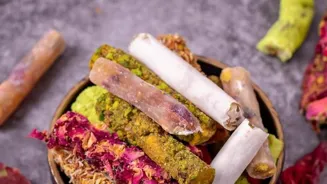Unveil the surprising origins of popular Indian dishes! Discover the hidden tales behind your favorite flavors
Namaste, food lovers! We Indians, we love our khaana. From the spicy depths of a vindaloo (vegetarian
version, of course!) to the sweet surrender of a gulab jamun, each dish is a story told through flavour. But how much do we really know about these culinary kings and queens of our hearts?
Prepare to be surprised! We've dug up 8 fascinating facts that might just change the way you look at your next meal. Get ready for a delicious dose of trivia!
Samosa: A global traveler evolving with local flavors
First up is the ever-popular Samosa! Did you know it actually originated in the Middle East? It wasn't always the potato-filled delight we know and love.
The original 'sambosa' travelled to India with traders and evolved over time, adopting local ingredients and flavors; like adding our desi aloo, peas, and spices. Imagine, a samosa without potatoes! That's almost unthinkable.
Its journey is a testament to how food adapts and transforms across cultures, embracing new tastes and ingredients along the way. This humble snack is a global traveler, proving that good food knows no boundaries and is always ready to evolve.
Idli: South Indian staple with Indonesian roots, symbol of cultural exchange
Next is the humble, yet iconic, Idli! This steamy, fluffy breakfast staple is a South Indian treasure, but some historians believe its origins can be traced back to Indonesia.
During the 8th to 12th centuries, Hindu kings of Indonesia had cooks who likely came to South India, bringing with them the knowledge of making steamed foods.
While the precise recipe may have differed, the technique of steaming fermented batter caught on, and gradually evolved into the idli we know and love today.
It's interesting to think of the idli as a culinary echo of cultural exchange, a reminder that our food stories are often intertwined with those of other lands.
Rajma: Indian dish from Mexican beans, adaptable cuisine legacy
Let's come to Rajma, that comforting kidney bean curry that's a Punjabi household staple. Surprisingly, rajma is not native to India. Kidney beans were brought to India from Central Mexico and Guatemala.
It was then that the clever cooks of Punjab decided that it should be cooked in a thick gravy with spices, giving it an identity of its own.
This is yet another example of how Indian cuisine has always been open to borrowing and adapting ingredients from different parts of the world, transforming them into something unique and utterly delicious. Imagine a world without rajma chawal! Thankfully, our ancestors were culinary pioneers.
Carrot pudding's surprising history: from Mughal meat dish to sweet delight
Then we have Gajar ka Halwa, the sweet carrot pudding that warms our hearts during winter. Its origins are NOT in India, either! It came from The Mughals but it wasn't made of carrots in the original form. It was a dish made of meat, ghee and dry fruits which was called as 'Halwa'.
The interesting bit is that, later on, carrots were introduced as a cheaper and easier alternative. Over the years, other ingredients were added and modified based regional preferences and availability and our Gajar ka Halwa as we know it today was born!
Who knew our beloved carrot halwa had such an interesting past?
Curry" encompasses diverse South Asian dishes with unique flavors and spices
And also, about the word "Curry". It’s a broad term used by the British to group south Asian dishes. Most of the dishes that are classified as "curry", each recipe has different spices and methods of cooking.
So next time anyone tells you "curry" just assume they mean a variety of dishes from South Asia, not just one dish! In reality, there is no one size fits all "curry," but rather a kaleidoscope of unique culinary expressions.
The dishes which are popularly tagged as "curry" are Dal Makhani to vegetable Korma, each a unique explosion of flavors and spices.
Chai's evolution from colonial commodity to beloved Indian beverage
Lastly, is your favorite, Chai! Chai has become an integral part of the Indian experience. But tea was not originally cultivated in the region. The drink became super popular when the British East India Company began large-scale production in India.
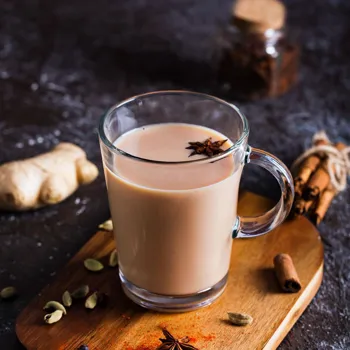
The idea was to make tea the drink of choice for all people. It was marketed really well back in the 20th century, and now some would argue that tea is more popular than coffee in India!
So, the next time you sip your chai, remember its journey, from a colonial commodity to a beloved national beverage. It's a testament to the power of adaptation and the enduring appeal of a good cup of tea.
AI Generated Content. Glance/InMobi shall have no liability for the content